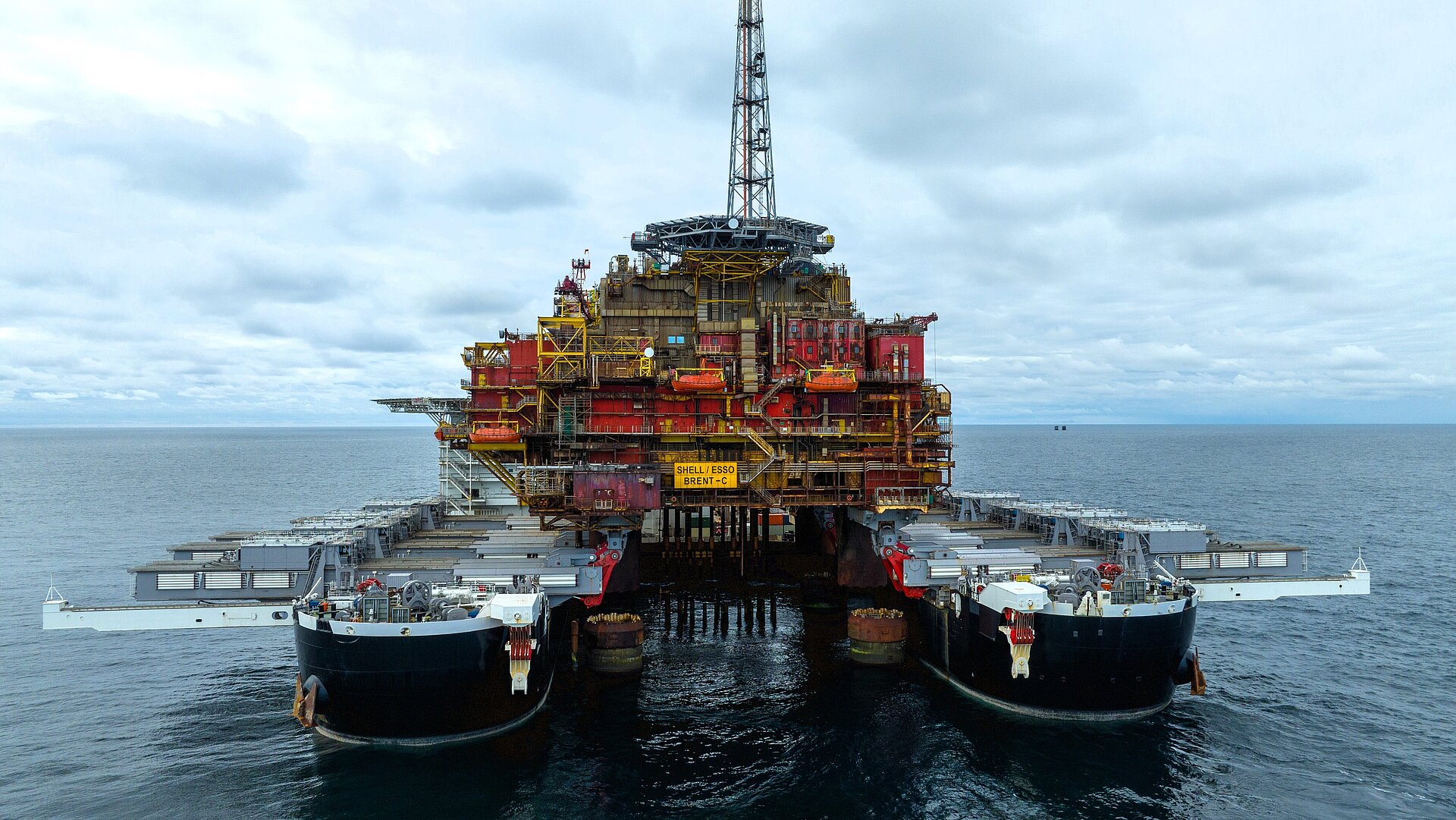Brent topside ‘skids’ onto quayside

The world’s largest motion-compensated heavy-lift and construction vessel Pioneering Spirit removed the Brent Charlie platform topside early in July (Source: Mammoet)
The Brent field, operated by Shell, lies about 186km northeast of the Shetland Islands and had four oil and gas platforms. Alpha was a jacket-based unit but the three others – Bravo, Charlie and Delta – were gravity-based. Delta stopped production in 2011, Alpha and Bravo in 2014, leaving Charlie still in operation.
Mammoet, which has decommissioned the three gravity-based topsides, faced complex engineering and stability challenges throughout the project. For Charlie, the company skidded the 31,0000-tonne topside unit onto the quayside. The unit’s concrete legs had been submerged in sea water for more than 40 years.
Allseas-owned Pioneering Spirit, the world’s largest motion-compensated heavy-lift and construction vessel, removed the Brent Charlie platform topside early in July. The unit was then transferred onto the Lady Allen, Allseas’ purpose-built cargo barge, which had already been fitted with skidding equipment so that the topside could be transferred to the quay at the port.
The skidding operation was carried out in two stages. First, the topside was skidded five metres to the aft of the barge. Then, after twelve hours to allow for further settling, it was skidded the remaining 130m into the final position on the quay.
One of the biggest challenges is managing four legs. As Mammoet sales director, Richard Verhoeff, noted: “Three legs are always stable; four legs are not. You try to keep a three-point suspension when performing a load-in, and still need to achieve that even with four legs. That’s where hydraulic grouping comes in very handy.”
Deflection between the legs is controlled by communication between the hydraulic groups. Hydraulic cylinders under each leg, and connected cylinders between each pair of legs, ensure that pressure on each remain the same.
Mammoet project manager, Leo De Vette, commented: “We have a pragmatic approach which is required on jobs like this. It’s really a team operation; you must do it together. Time is of the essence, so equipment can be moved to the next job. Once the topside is on the barge, there is only one priority – get if off as safely and efficiently as possible.”
